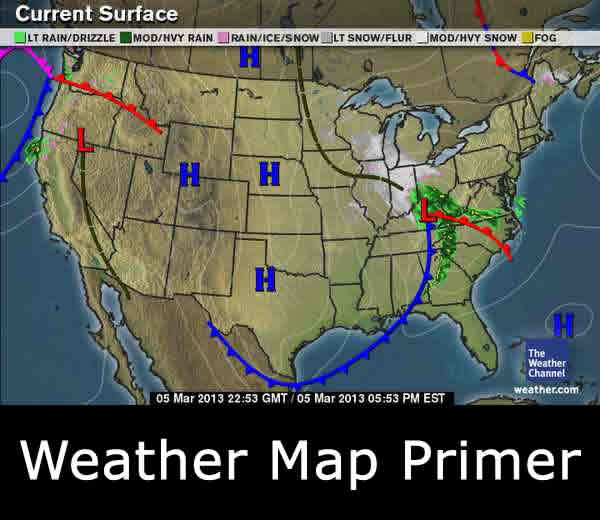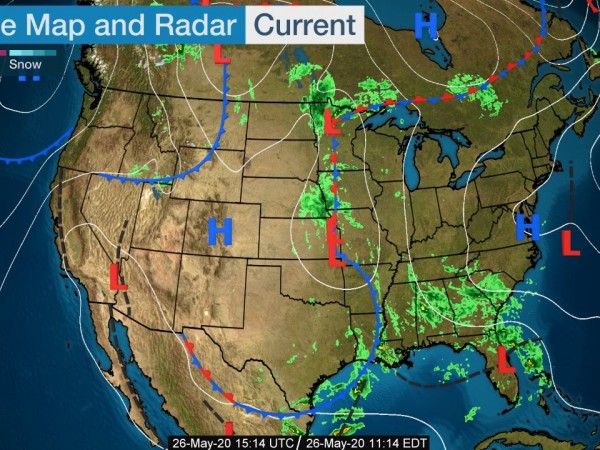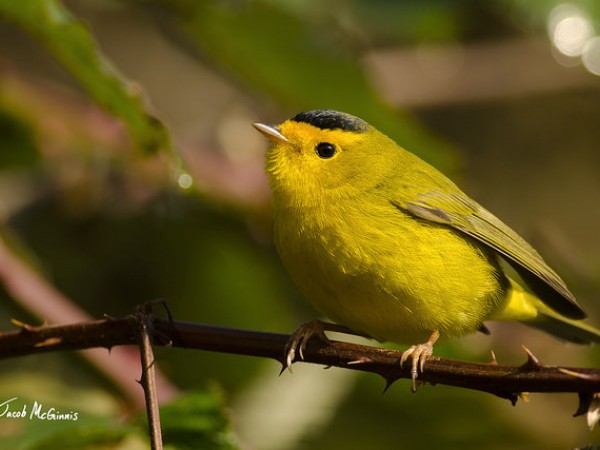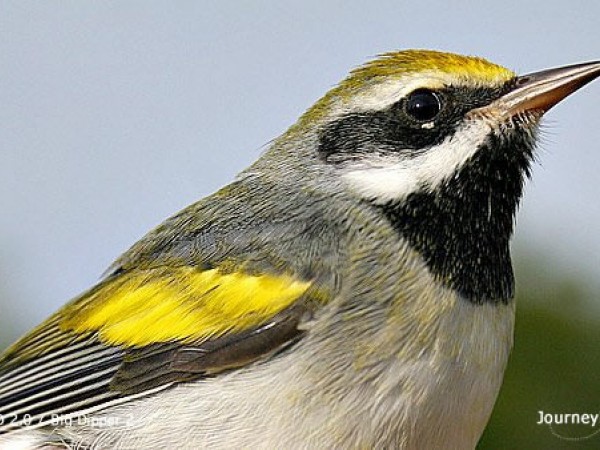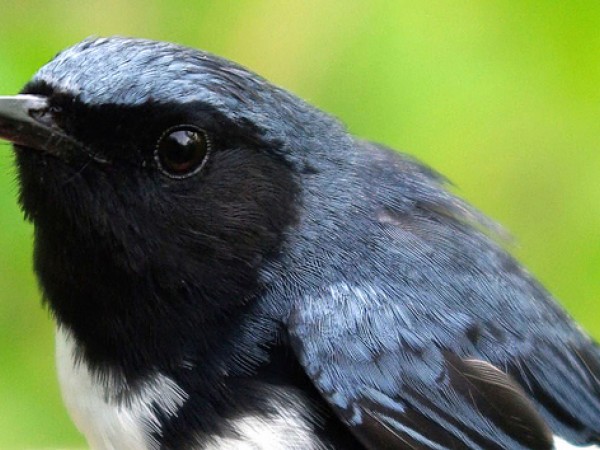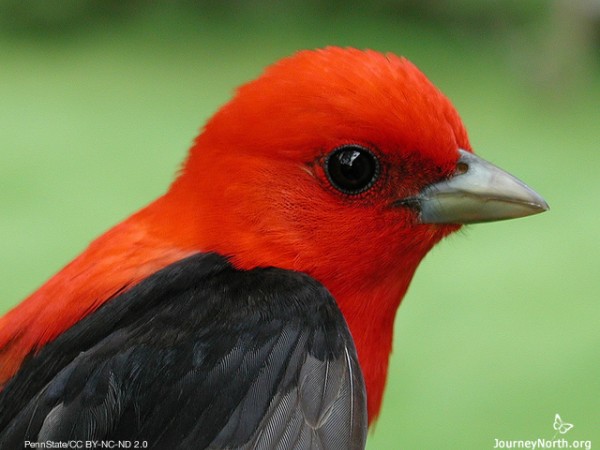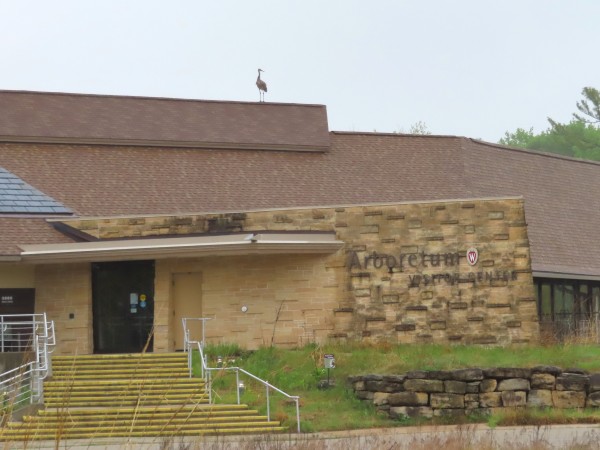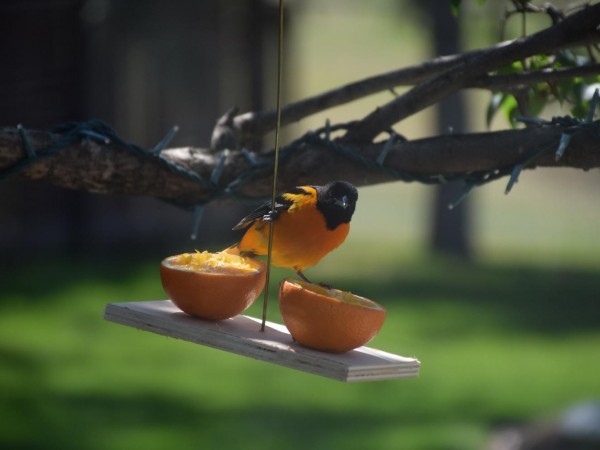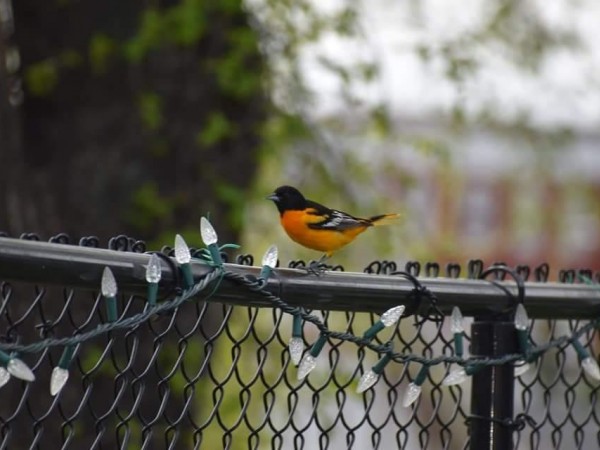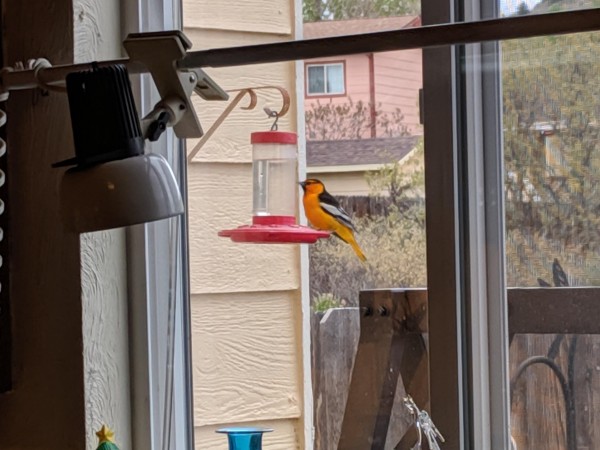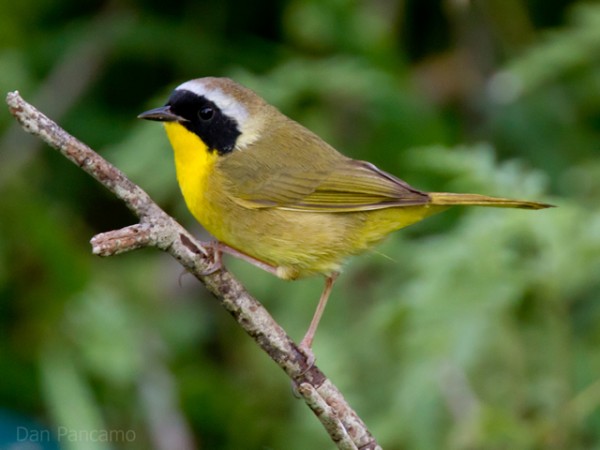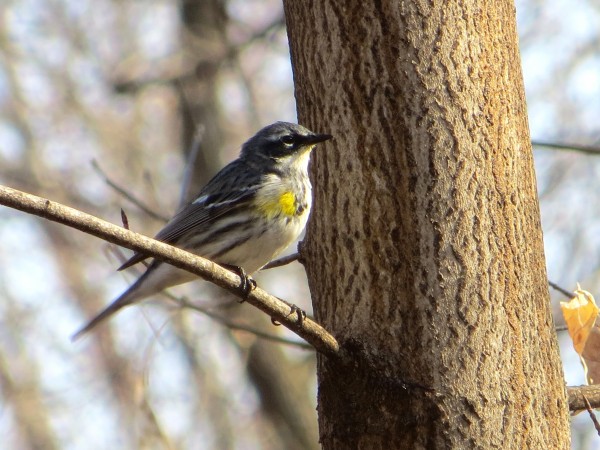Wrapping Up Weather & Songbird Migration
This is the final Weather & Songbird Migration News Update for spring 2020. Thank you for following along and sharing your observations. Migration is winding down, but there is still much to see and look forward to as birds will be busy building nests and raising chicks.
Thank You!
The 2020 spring migration season is coming to an end. Whether it was early arrivals, Tropical Storm Arthur, or "fallouts" in the Gulf Coast resulting in 19 warbler species spotted in a lucky birder's yard, it sure has been an eventful season! Amid these uncertain times, we hope these updates have provided you a sense of joy and wonder. Thank you for following along and sharing your observations.
A special thank you to Dr. David Aborn for sharing his weekly Weather Forecasts for Migrating Songbirds reports. Dr. Aborn has been contributing to Journey North for over 23 years, informing and inspiring our community along the way.
Note: Chuck Henrikson will continue to share his birding reports and observations from the UW–Madison Arboretum (Journey North's home base) and beyond. Journey North will highlight Chuck's findings on our social media channels. Stay tuned!
Final Report from Dr. David Aborn
Dear Journey North Readers,
The weather squeeze I talked about last week – where storm systems in the east and the west would funnel birds into the central part of the country – made for some good late season birding. Birders in Ohio tallied 14 different species of warblers. In Michigan, there were a lot of Gray Catbird sightings as well as good numbers of Blackburnian Warblers, Canada Warblers, Wilson’s warblers, and Golden-winged Warblers. Minnesota recorded an influx of Swainson’s Thrushes and Gray-cheeked Thrushes, and 11 species of warblers were seen in South Dakota.
Once Tropical Storm Arthur moved away, the storm system in the east cleared out and allowed migratory birds to head north over the weekend. Common sights in New York included American Redstarts, Blackburnian Warblers, Blackpoll Warblers, Bay-breasted Warblers, and Chestnut-sided Warblers. Blackpoll and Magnolia Warblers were common in New Hampshire, while birders in Maine reported Chestnut-sided Warblers, Black-throated-blue warblers, and Scarlet Tanagers.
Migration was less active in the western US, although there was some movement of Willow Flycatchers, Orange-crowned Warblers, MacGillivray’s Warblers, and Warbling Vireos through California. Good flying weather over the weekend allowed Tree Swallows and Orange-crowned Warblers to make it all the way to Alaska.
If we look at this week’s weather map, there is a low pressure area bringing scattered rain to much of the southeastern US, likely hindering activity there. From the mid-Atlantic up through New England, however, clear skies and southerly winds means there will be a lot of migration in those regions for the next few days. In the middle of the country, a cold front is bringing rain and northerly winds; migratory birds moving there this weekend will have to settle in for a few days. Out west, clear skies and southerly winds should mean birds will be moving through. There is a cold front moving into the Rockies, but it is not very strong and should not affect migration much.
For people in the southern half of the US, migration is pretty much over; in the northern half of the US and into Canada, there are still a couple of more weeks left. Even when migration is over, there will still be a lot to see as birds will be busy building nests and raising their chicks. Plus, there is fall migration to look forward to!
I hope you have enjoyed all the reports this season. Happy birding and see you next spring! Take care.
David Aborn
Chuck Henrikson's Birding Report From UW–Madison Arboretum
"Recently, it seems that new species of flycatchers are the latest new arrivals. We’ve had Great Crested Flycatchers for a couple weeks now. New flycatchers include Eastern Wood Pewees, Willow Flycatchers and Olive-sided Flycatchers. They have been seen this past week. In addition, some of the rarer flycatchers like the Acadian, Alder and Yellow-bellied Flycatchers have also been seen or at least heard." Read Chuck's latest birding report from the Arboretum.
Baltimore Orioles Settling Down for the Summer
Baltimore Orioles are reaching the northern limits of their range as spring migration winds down and breeding season begins.
From Ste-Julie, QC: Jackie spotted a, “beautiful male oriole. I put some oranges out for him.” (05/15/2020)
From Bernard, ME: Deborah shared, “we moved to Maine 16 years ago from Maryland. Until now, we haven't seen a Baltimore Oriole in Maine. Only saw a male, no female. He was here for two full days, ate marmalade and grape jelly, feasted on some oranges and drank a lot of sugar syrup.” (05/17/2020)
From Moose Jaw, SK: Marian noted, “we saw our first Baltimore Oriole today at the orange halves we put out yesterday.” (05/24/2020)
From Calgary, AB: Jonathan said, “male Baltimore Oriole heard and sighted but wouldn't stay long enough to be photographed. At first. We have a new oriole feeder and this is the first year we've seen one on the property.” (05/25/2020)
Colorado is still a hotspot for Bullock's Orioles and reports are also coming in from the northern reaches of their range in Montana.
From Livingston, MT: Mariann said “1st year male Bullock's Oriole sitting in the apple tree.” (05/20/2020)
From Colorado Springs, CO: Karen said, “male and female [Bullock’s Oriole] seen at my hummingbird feeder! They come every year for the last few years.” (05/23/2020)
Barn Swallow, Common Loon, and Red-winged Blackbird Updates
Nesting season is making Barn Swallows territorial.
From Tecumseh, MI: Jan noted, “I had given up hope of seeing them [Barn Swallows] this year, but they are finally back. Got up this morning and they were here working on getting their nest ready. So good to be swooped at again!” (05/19/2020)
Common Loons are being spotted in their summer breeding grounds. Check out this wonderful photo captured by Ayden in North Waterboro, ME.
Here is northernmost Red-winged Blackbird sighting of the season thus far:
From Peace River, BC: Jamie shared, “nice to hear their [Red-winged Blackbird] beautiful spring song again!” (05/06/2020)
Last Week for "I Am Journey North"
This is the last week to submit your “I am Journey North” photos – this project will run until May 31st. Share what you love about Journey North and the migratory species and habitat you help by submitting data, following news updates and/or planting pollinator gardens.
From Allenton, WI: Darleen shared, " [I] Have been converting our 5 acre property into native habitats since 2008. The photo is part of the woodland habitat. I've been submitting sightings and following many of your migrations for a few years now. It's fun to see what the rest of the world reports." (05/22/2020)
Thank you for your commitment to protecting migratory species and their habitat!
Keep Reporting and Stay Tuned!
Even though the Weather & Songbird Migration News Updates are ending for the season, you can still report your sightings of Baltimore and Bullock's Orioles, Barn Swallows, Common Loons, and Red-winged Blackbirds until the end of July. You can also participate in other Journey North projects throughout the rest of spring and early summer. Report your sightings of hummingbirds, monarchs, and much more.
Have a great summer!



